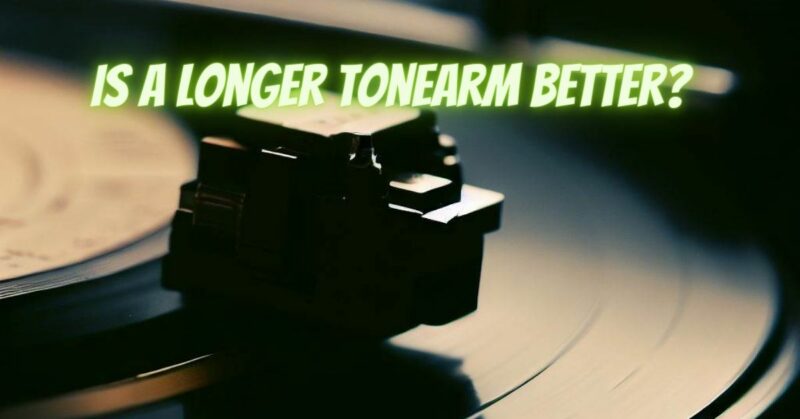The tonearm is a critical component of a turntable, responsible for holding the phono cartridge and accurately tracking the grooves on vinyl records. One of the factors that can vary among different turntable models is the length of the tonearm. Some turntables come with shorter tonearms, while others feature longer ones. The question arises: is a longer tonearm better? In this article, we explore the implications of tonearm length in turntables and whether longer is always synonymous with better.
The Basics of Tonearm Length
Tonearm length refers to the distance between the pivot point of the tonearm and the stylus tip. Longer tonearms, as the name suggests, have a greater distance, while shorter ones have a smaller distance. The standard tonearm length for most turntables is around 9 inches, but variations can range from 8 to 12 inches and even beyond.
Advantages of Longer Tonearms
- Reduced Tracking Error: Longer tonearms have a lower tracking error because the needle has a gentler arc across the record surface. This can result in more accurate tracking and reduced distortion.
- Improved Soundstage and Imaging: Longer tonearms can offer improved soundstage and imaging by allowing the cartridge to extract more information from the record grooves. This can lead to a more immersive and detailed listening experience.
- Lower Inner Groove Distortion: Longer tonearms can also reduce inner groove distortion, a common issue on records where the grooves are tightly spaced towards the center. The longer tonearm can track these inner grooves more effectively.
Disadvantages of Longer Tonearms
- Increased Mass: Longer tonearms tend to have higher effective mass, which can affect resonance and reduce high-frequency performance. However, this can be mitigated through proper tonearm design and materials.
- Cartridge Compatibility: Some cartridges are designed specifically for certain tonearm lengths. Using a cartridge that is not matched to the tonearm length may lead to suboptimal performance.
- Space Requirements: Longer tonearms may require more space on the turntable, limiting the turntable’s overall design and size.
The Importance of Proper Design and Setup
It’s crucial to note that the length of the tonearm is just one factor among many that contribute to sound quality in a turntable. Proper design, engineering, and setup are equally important. A well-designed shorter tonearm can still provide excellent performance and accurate tracking, while a poorly designed longer tonearm may not yield the desired benefits.
In conclusion, whether a longer tonearm is better depends on various factors, including the turntable’s design, the quality of materials used, the cartridge compatibility, and the overall setup. While longer tonearms can offer advantages such as reduced tracking error, improved soundstage, and lower inner groove distortion, they are not always inherently better than shorter ones.
The best tonearm length for a turntable is one that is well-matched to the cartridge, properly engineered, and carefully set up. Audiophiles and vinyl enthusiasts should consider the overall design and performance of the turntable, along with the specific characteristics they value in sound quality, before making a decision. Ultimately, achieving the best sound quality in vinyl playback requires a combination of careful consideration, proper setup, and an appreciation for the captivating world of analog music.

